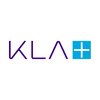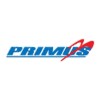Filter interviews by
Uniko Plast Mechanical Engineer Interview Questions and Answers
6 Interview questions
Injection moulding is a manufacturing process used to produce parts by injecting molten material into a mould.
Molten material is injected into a mould cavity
The material solidifies inside the mould
The mould is then opened and the part is ejected
Commonly used for producing plastic parts
Can also be used for producing metal, glass, and ceramic parts
OEE can be calculated by multiplying Availability, Performance, and Quality percentages.
Calculate Availability by dividing Operating Time by Planned Production Time.
Calculate Performance by dividing Actual Production by Maximum Production.
Calculate Quality by dividing Good Units by Total Units Produced.
Multiply Availability, Performance, and Quality percentages to get OEE.
Injection moulding machines are classified based on their function, structure, and control system.
Based on function: hydraulic, electric, hybrid
Based on structure: vertical, horizontal, multi-component
Based on control system: manual, semi-automatic, automatic
Examples: Arburg, Engel, Krauss Maffei
Core and cavity are the two halves of a mold used in injection molding process.
Core is the part of the mold that creates the internal features of the plastic part.
Cavity is the part of the mold that creates the external features of the plastic part.
Core and cavity are designed to fit together to create the final shape of the plastic part.
The molten plastic is injected into the cavity and takes the shape of the cor...
Cushion is the amount of money or time added to a project schedule to account for uncertainties and risks.
Cushion is also known as contingency reserve.
It is added to the project schedule to ensure that the project is completed on time and within budget.
The amount of cushion depends on the level of uncertainty and risk involved in the project.
For example, a project with a high level of uncertainty and risk may requ...
There are various types of plastics such as thermoplastics, thermosetting plastics, and elastomers.
Thermoplastics can be melted and re-molded multiple times, examples include polyethylene and PVC.
Thermosetting plastics cannot be melted and re-molded, examples include epoxy and phenolic resins.
Elastomers are rubber-like materials that can stretch and return to their original shape, examples include silicone and neo...
Uniko Plast Mechanical Engineer Interview Experiences
1 interview found
Interview Questionnaire
7 Questions
- Q1. What is injection moulding process?
- Ans.
Injection moulding is a manufacturing process used to produce parts by injecting molten material into a mould.
Molten material is injected into a mould cavity
The material solidifies inside the mould
The mould is then opened and the part is ejected
Commonly used for producing plastic parts
Can also be used for producing metal, glass, and ceramic parts
- Q2. What is difference between core and cavity?
- Ans.
Core and cavity are the two halves of a mold used in injection molding process.
Core is the part of the mold that creates the internal features of the plastic part.
Cavity is the part of the mold that creates the external features of the plastic part.
Core and cavity are designed to fit together to create the final shape of the plastic part.
The molten plastic is injected into the cavity and takes the shape of the core.
The...
- Q3. Tpye of plastics?
- Ans.
There are various types of plastics such as thermoplastics, thermosetting plastics, and elastomers.
Thermoplastics can be melted and re-molded multiple times, examples include polyethylene and PVC.
Thermosetting plastics cannot be melted and re-molded, examples include epoxy and phenolic resins.
Elastomers are rubber-like materials that can stretch and return to their original shape, examples include silicone and neoprene...
- Q4. What is cushion. How much should the cushion?
- Ans.
Cushion is the amount of money or time added to a project schedule to account for uncertainties and risks.
Cushion is also known as contingency reserve.
It is added to the project schedule to ensure that the project is completed on time and within budget.
The amount of cushion depends on the level of uncertainty and risk involved in the project.
For example, a project with a high level of uncertainty and risk may require a...
- Q5. Types of injection moulding machine?
- Ans.
Injection moulding machines are classified based on their function, structure, and control system.
Based on function: hydraulic, electric, hybrid
Based on structure: vertical, horizontal, multi-component
Based on control system: manual, semi-automatic, automatic
Examples: Arburg, Engel, Krauss Maffei
- Q6. Whts 5s ,kanize poye yoke etc
- Q7. How to calculate OEE?
- Ans.
OEE can be calculated by multiplying Availability, Performance, and Quality percentages.
Calculate Availability by dividing Operating Time by Planned Production Time.
Calculate Performance by dividing Actual Production by Maximum Production.
Calculate Quality by dividing Good Units by Total Units Produced.
Multiply Availability, Performance, and Quality percentages to get OEE.
Top trending discussions






Interview questions from similar companies

Service Engineer Interview Questions & Answers
ABM Techno-Matrix Private Limitedposted on 28 Mar 2025
I appeared for an interview in Feb 2025, where I was asked the following questions.
- Q1. About My qualification and experience, working knowledge.
- Q2. Notice period and when I can join
- Q3. Salary negotioation
Interview Preparation Tips

I applied via LinkedIn and was interviewed in Apr 2024. There were 2 interview rounds.
Aptitude 60 min 25 qstns
(1 Question)
- Q1. SEM explain working method etc
- Ans.
SEM stands for Scanning Electron Microscope, a type of microscope that uses electrons to create high-resolution images of samples.
SEM uses a focused beam of electrons to scan the surface of a sample
The electrons interact with the atoms in the sample, producing signals that can be used to create an image
SEM provides high-resolution images with magnifications up to 1,000,000x
It is commonly used in materials science, biol...

I applied via Recruitment Consultant and was interviewed before May 2020. There were 3 interview rounds.
Interview Questionnaire
2 Questions
- Q1. DS and Algo questions based on DP and backtracking
- Q2. Clone linked list with random pointers.
- Ans.
Clone a linked list with random pointers.
Create a new node for each node in the original list.
Store the mapping between the original and cloned nodes in a hash table.
Traverse the original list again and set the random pointers in the cloned list using the hash table.
Return the head of the cloned list.
Interview Preparation Tips
Skills evaluated in this interview

I applied via Referral and was interviewed in Feb 2020. There were 6 interview rounds.
Interview Questionnaire
1 Question
- Q1. I am not allowed to reveal
Interview Preparation Tips
Some tips for software engineer interview
1. Please prepare to do competitive programming like use leetcode algoexpert hacker rank
2. Some of the important areas are string problems dynamic programming stack based and tree based
3. There can be design round and interesting questions may be encountered

I applied via Company Website and was interviewed in Jun 2021. There were 4 interview rounds.
Interview Questionnaire
3 Questions
- Q1. Supply Chain action on inter location transfer
- Ans.
Inter location transfer in supply chain involves movement of goods between different locations within the supply chain network.
Inter location transfer helps in optimizing inventory levels and reducing lead times.
It requires coordination between different locations and proper documentation.
Examples include transfer of raw materials from warehouse to production facility, transfer of finished goods from manufacturing plan...
- Q2. Order action if items are not in stock
- Ans.
Order alternative items or notify customer if items are not in stock.
Check inventory levels regularly
Identify alternative products that can be offered to customers
Notify customers of out-of-stock items and provide estimated restock dates
- Q3. Which ERPs do you have experience in implementing?
- Ans.
I have experience in implementing SAP and Oracle ERPs.
Implemented SAP ERP for a manufacturing company
Implemented Oracle ERP for a retail company
Experience in customizing ERP modules to meet business requirements
Interview Preparation Tips
Skills evaluated in this interview

Sales Executive Interview Questions & Answers
ABM Techno-Matrix Private Limitedposted on 17 Aug 2023
I applied via Walk-in and was interviewed before Aug 2022. There were 3 interview rounds.

(2 Questions)
- Q1. How Many years of experience you have
- Q2. 12 years of experience on the same field
(1 Question)
- Q1. My Expectation and my notice period
Interview Preparation Tips

I applied via Naukri.com
Hacker rank question - easy and medium
Design solution for problems
(1 Question)
- Q1. Design a software for car ECU
- Ans.
Design a software for car ECU
Identify the requirements and functionalities of the ECU
Choose a programming language and development environment
Implement the software to control the engine, transmission, and other systems
Test the software for reliability and performance
Ensure the software is secure and can handle errors and exceptions
(2 Questions)
- Q1. What are your strengths and weaknesses?
- Ans.
My strengths include strong leadership skills, excellent communication, and problem-solving abilities. My weaknesses include being overly critical of myself and sometimes taking on too much responsibility.
Strength: Strong leadership skills
Strength: Excellent communication
Strength: Problem-solving abilities
Weakness: Being overly critical of myself
Weakness: Sometimes taking on too much responsibility
- Q2. Tell me about yourself.
- Ans.
I am an experienced professional with strong leadership skills and a proven track record in managing teams.
Experienced professional with strong leadership skills
Proven track record in managing teams
Excellent communication and problem-solving abilities
Ability to motivate and inspire team members
Focused on achieving goals and delivering results
Interview Preparation Tips
- hash maps
- solid
solve some design problems
Skills evaluated in this interview

I applied via Referral and was interviewed in Nov 2023. There were 6 interview rounds.

Duration: 1Hour 30 Minutes, 2 Coding Questions of Total 175 Marks. 1st Question has 75 marks and 2nd Question has 100 marks.
(2 Questions)
- Q1. 1. Find the smallestMissingNumber in given array using Bitwise OR operation alone 2. Based on Array data Manipulation.
- Ans.
Using Bitwise OR operation to find the smallest missing number in an array.
Iterate through the array and perform Bitwise OR operation with each element to set corresponding bit in a bitmask
Iterate through the bitmask to find the first unset bit, which represents the smallest missing number
Example: Array [0, 1, 3, 4, 6] would have a bitmask of 10101, smallest missing number is 2
- Q2. Q2: Customized Data Extraction From Given Dynamic Array & Perform Some Math Operations On the Extracted Data
- Ans.
Extract data from a dynamic array and perform mathematical operations on it.
Identify the dynamic array structure, e.g., ['12', '15', '20'].
Convert string elements to integers for mathematical operations.
Perform operations like sum, average, or product on the extracted data.
Example: For array ['2', '3', '5'], sum = 2 + 3 + 5 = 10.
Use built-in functions like map() for conversion and reduce() for aggregation.
(1 Question)
- Q1. Write a Pseudo code for given scenario?
- Ans.
Pseudo code for a scenario
Define variables and data structures needed
Write the main logic using conditional statements and loops
Handle edge cases and error conditions
Test the pseudo code with sample inputs
(1 Question)
- Q1. System Design & Design Pattern based questions
(1 Question)
- Q1. Not Applicable (Yet to be scheduled)
Skills evaluated in this interview

I appeared for an interview in Feb 2025, where I was asked the following questions.
- Q1. What your exp?
- Ans.
I have over 5 years of experience in software development, specializing in web applications and cloud technologies.
Developed a full-stack web application using React and Node.js, improving user engagement by 30%.
Led a team of 4 developers in creating a microservices architecture for a scalable e-commerce platform.
Implemented CI/CD pipelines using Jenkins and Docker, reducing deployment time by 50%.
Worked with Agile met...
- Q2. What is you total exp?
Uniko Plast Interview FAQs
Tell us how to improve this page.
Interview Questions for Popular Designations
- Senior Engineer Interview Questions
- Production Engineer Interview Questions
- Project Engineer Interview Questions
- Junior Engineer Interview Questions
- Electrical Engineer Interview Questions
- Service Engineer Interview Questions
- Site Engineer Interview Questions
- Maintenance Engineer Interview Questions
- Show more
Interview Questions from Similar Companies
|
Dispatch Executive
4
salaries
| ₹1.8 L/yr - ₹3.5 L/yr |
|
Dispatch Incharge
3
salaries
| ₹2.8 L/yr - ₹3.5 L/yr |

Primus Global Technologies

Magneti Marelli Motherson Auto System

TriGeo Technologies

Tradeshala
- Home >
- Interviews >
- Uniko Plast Interview Questions










